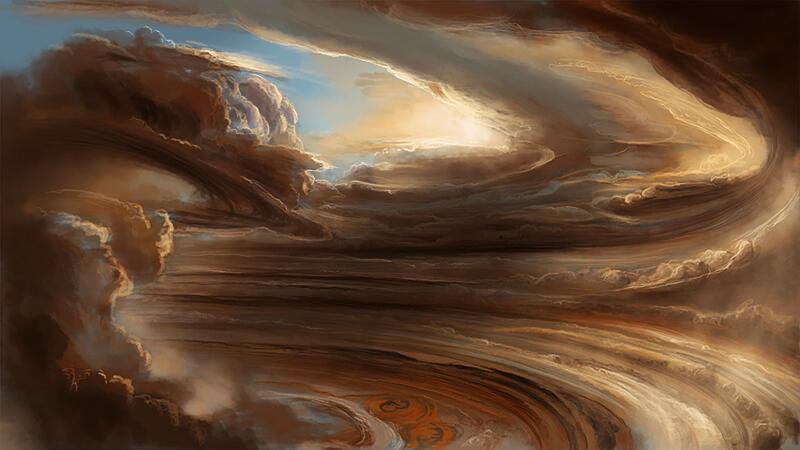Mercury
Mercury is the closest planet to the sun and has a very thin atmosphere. The atmosphere is composed mainly of helium and hydrogen, with trace amounts of other gases such as oxygen, sodium, and potassium. Due to its proximity to the sun, the atmosphere is constantly being stripped away by the solar wind.
Venus
Venus has a very thick and toxic atmosphere composed mainly of carbon dioxide with small amounts of nitrogen and sulfuric acid. The surface temperature is extremely hot due to the greenhouse effect, which traps heat from the sun in the atmosphere. The atmosphere also has a strong sulfuric acid cloud cover, which makes the planet appear bright and reflective.
Earth
Earth's atmosphere is composed mainly of nitrogen and oxygen, with small amounts of other gases such as carbon dioxide, argon, and neon. The atmosphere plays a crucial role in regulating the planet's temperature and protecting it from harmful radiation. It also supports life by providing oxygen for respiration and shielding us from the sun's harmful UV rays.
Mars
Mars has a very thin atmosphere composed mainly of carbon dioxide with small amounts of nitrogen and argon. The atmosphere is not thick enough to provide significant protection from radiation or support human life. However, the planet's atmosphere does have the potential to be modified in the future to make it more habitable.
Jupiter
Jupiter has a very thick atmosphere composed mainly of hydrogen and helium, with small amounts of methane, ammonia, and water vapor. The atmosphere is also known for its distinctive bands and spots, which are caused by strong winds and storms. Jupiter's atmosphere is also home to the famous Great Red Spot, which is a giant storm larger than the size of Earth.
Saturn
Saturn's atmosphere is similar to Jupiter's, composed mainly of hydrogen and helium, with small amounts of other gases such as methane and ammonia. The atmosphere is also known for its bands and spots, and the planet is home to the second-largest storm in the solar system, the Great White Spot.
Uranus
Uranus has a very cold and thin atmosphere composed mainly of hydrogen and helium, with small amounts of methane. The atmosphere is unique in that it is tilted on its side, causing extreme seasons and strong winds. Uranus is also known for its bright blue color, which is due to the presence of methane in the atmosphere.
Neptune
Neptune's atmosphere is similar to Uranus's, composed mainly of hydrogen and helium with small amounts of methane. The atmosphere is also known for its strong winds, which can reach speeds of up to 1,200 miles per hour. Neptune is also home to the Great Dark Spot, a giant storm similar to Jupiter's Great Red Spot.
In conclusion, the atmospheres of the planets in our solar system are incredibly diverse, each with its unique characteristics and properties. Understanding these atmospheres is essential for understanding the climate, weather patterns, and potential for life on each planet. As we continue to explore our solar system and beyond, we will undoubtedly discover even more fascinating and complex atmospheres to study.

